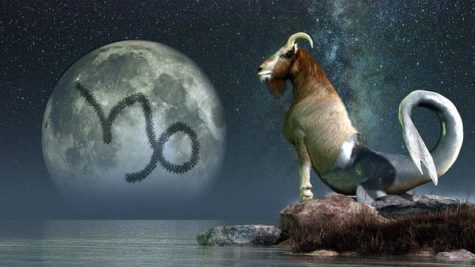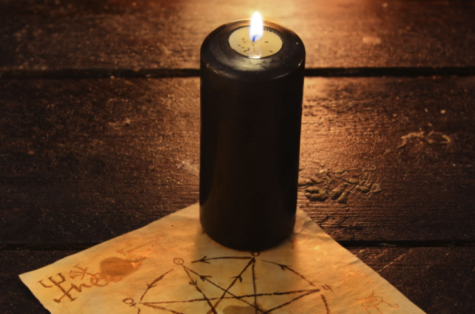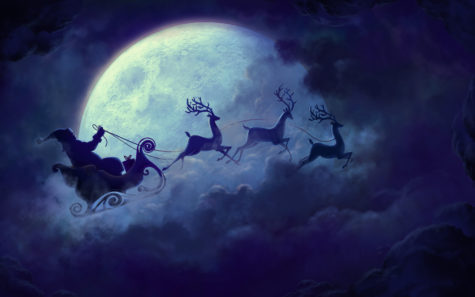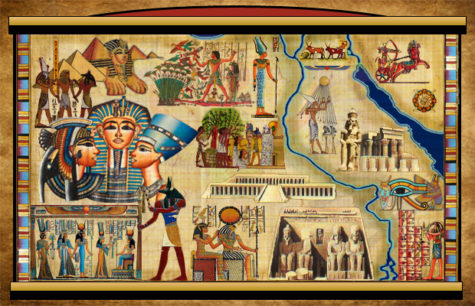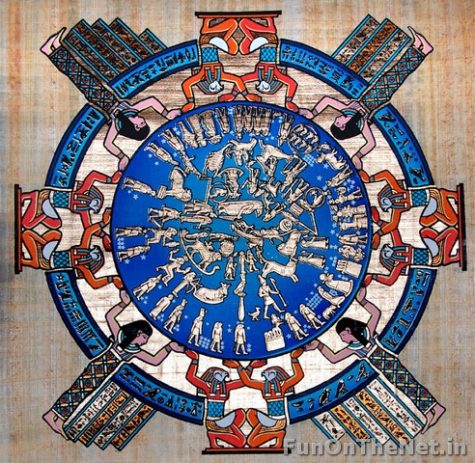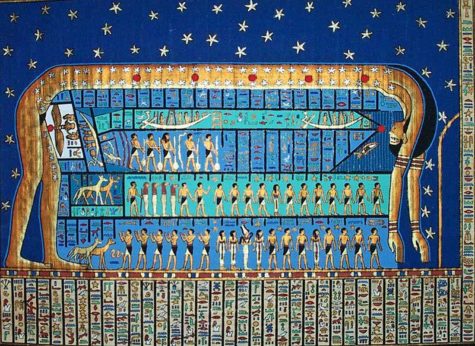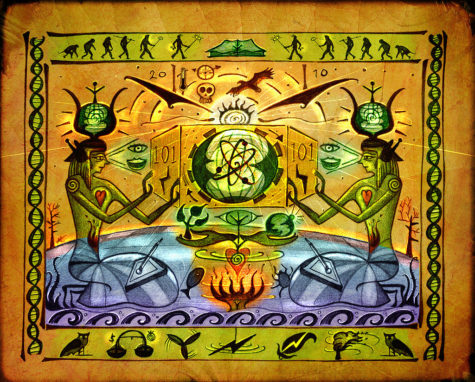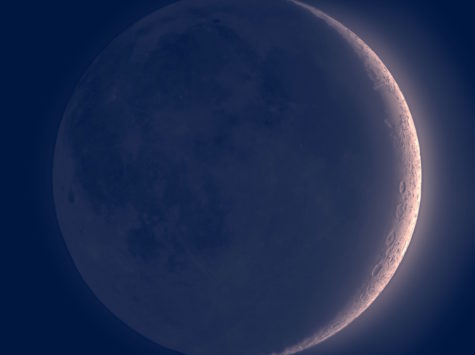Moon
It is important to remember that the Moon cycles through the signs of the zodiac every couple of days, and it’s important to check the time of day that it enters and leaves the sign, because that will vary depending on your geographical location. If in doubt, you can use this moon sign calculator.
This is the sign when the Moon is weak and operating at a disadvantage.
When the moon is in Capricorn, this is another excellent time for black magickal workings. Depression, ruthlessness, using people viciously, long-term results. Honors, social standing, responsibility, authority, structure, setting long-term goals and plans for the future. NOT a good time to seek favors from those in authority. Magickal workings and spells that feature a time delay or are lasting, wasting, manipulating people, business, banishing. This is a “ruthless” moon sign.
Capricorn rules profession, inherited traits, responsibility, public eye, promotion, hermit, solitude, social standing, degrees and advancement, the boss, establishment, terrain that is rocky, mountainous and not arable, but possibly rich in minerals, rocks and stones, hard work, social climbing, no nonsense, depressive, time and clocks, ruthlessness, use people not nicely, the ends justify the means, things you want worse than anyone else, conscience, profound, wisdom, Crone, paranoid, dry wry humor, long term results, respect.
Workings ruled by the malefic planet Saturn are favored at this time. This includes spells for:
- Career
- Job
- Business
- Work
- Honor and reputation
- Big business
- Achievement, awards and recognition
- Father
- Authority in general
- World leaders, statesmen, presidents, government in general
- Ceremonial Magick
Capricorn is a wise and purposeful earth sign that helps to improve social status, achieve material success, choose the right profession or project. The moon in this sign encourages efficiency, conciseness, caution, order, and reliability and does not like violations of the rules and laws.
Capricorn is considered to be a sign of average fertility, so you can plant various plants in your garden during the days of his lunar power.In addition, astrologers claim that the moon in Capricorn helps couples to conceive a girl.
Note:
Do NOT have surgical procedures performed on the bones/skeletal system, teeth, or knees at this time.
Moon Phase Info
- New Moon in Capricorn – a good day for career growth, you can ask for a new position but use the specific facts.
- Waxing Moon in Capricorn – the time to solve business issues, use a pragmatic approach.
- Full Moon in Capricorn – the time for concluding various deals, increasing diplomacy.
- Waning Moon in Capricorn – time to throw out the accumulated emotions in the gym.
Candle Banishing Ritual For The Capricorn Moon
You Will Need:
- One black candle
- A candleholder
- Matches
- Black or white pepper
- Salt
- A carving tool
- Anointing oil (this can be any kind of oil you prefer)
Begin by slowly sprinkling salt in a counterclockwise circle around you and your work area, visualize the salt creating a barrier, protecting you during your ritual. Call the target of your banishing spell to mind and carve your intention into the candle. For example, you might carve “Mark will never speak to me again” or “My anxiety is gone”. You may also wish to carve a banishing sigil into your candle.
You can create your own sigil, or if you need some ideas, here are some examples:
When you’ve finished, anoint your candle with the oil and sprinkle the pepper over it. Set the candle into your candle holder and light it, speaking your intention aloud. If it feels good you can turn your intention into a mantra to chant while the candle burns.
Allow the candle to burn itself out, this should be done on a fireproof surface and again, away from pets. Depending on your choice of candle, it may take several hours to completely burn. Do not leave your candle unattended!
If you don’t wish to burn the entire candle you can carve a line halfway or a third of the way down the candle and confine your spell carving to the top portion. This can be tricky if you use a taper candle, be gentle so as not to snap it. When the candle burns to this line you may blow it out and reserve the rest of the candle for another banishing spell.
Sources:
It is important to remember that the Moon cycles through the signs of the zodiac every couple of days, and it’s important to check the time of day that it enters and leaves the sign, because that will vary depending on your geographical location. If in doubt, you can use this moon sign calculator.
Sagittarius rules in-laws in general, parties and fun, long journeys, dreamwork, high mysteries, higher learning, sports, good deeds, goodwill, fame, generosity, wild abandon possible, eternal optimism, resilience, rationalization, future oriented, movement, funny stuff, mind expansion, gurus, spiritual occurrences, ability to perceive right and wrong, faith, television, import/export, languages, pratfall humor, churches, publishers and publishing.
Moon in Sagittarius governs religion, Universities, travel, higher education, gambling, good luck, good for ceremonial magick, best for white magick, publishing, sports, the outdoors, the law. Pulling off something big.
Magickal workings ruled by Jupiter are successful at this time. These include spells for the following:
- Legal matters in general, laws, judges
- Teaching and learning, education
- Philosophy and ethics
- Dreams
- Contacting the higher planes
- Accessing the Akashic records
- Big rituals
- Contacting Deity in general and God in specific
- Divination
- Starting a tradition
- Big business
- Monopolies
- Conscience
- Ceremonial magick
- Luck in general
- Good luck
Sagittarius is an active fire sign that encourages communication, learning, and travel. The days with the Moon in Sagittarius are great for joining a new team, putting together your own team, starting a study of any new discipline, going on a business trip or just going out with friends. Usually, Sagittarius provokes physical activity of a person, therefore sports competitions, team games, physical work on the fresh air will be successful. In addition, Sagittarius exacerbates a sense of justice. So, on such days, you can safely hold social actions, to defend your rights.
Sagittarius is considered to be a sign of average fertility, so you can plant various plants in your garden during the days of his lunar power. In addition, astrologers claim that the moon in Sagittarius helps couples to conceive a boy.
Note:
Do NOT have surgical procedures performed on the hips or thighs at this time.
Moon Phase Info
- New Moon in Sagittarius – a great time to get new information and put it into practice.
- Waxing Moon in Sagittarius – the time of short-term random connections. An acquaintance on this day does not promise a long successful relationship.
- Full Moon in Sagittarius – an ideal time to conduct various seminars, courses, and events, transfer skills, and knowledge.
- Waning Moon in Sagittarius – conflict days, time to find out who is in charge here. Better to keep calm and avoid disputes.
Sagittarius Moon Meditation
Sitting in silence, Ask “How can I use these energies of Sagittarius for the upliftment of creation as a whole?” Align with the universal realm of ideas. In receptivity, allow yourself to await new inspirations, new impressions. With a joyful heart, receive and resolve to manifest these new ideas into the world as an act of service to humanity.
The Moon in Sagittarius affects the extended vertebrae (sacrum and coccyx) as well as thighs. At this time massages are particularly beneficial and can loosen up the muscles. Stiff thigh muscles and deep-seated contusions can be quickly cured with long soaks in Epsom salt and soothing herbal mixtures that smell great and relax the senses. Take this soak a step further by lighting a purple candle (the color associated with Sagittarius) and close your eyes for a healing moon meditation.
Sitting comfortably in silence welcome the fiery, passionate, and expansive energies of Sagittarius in. Practice being mindful of the destructive potential of these energies by allowing thoughts of lower nature to come in, and release them out with each breath. At this time, it is essential that we choose to fill our mental and emotional natures with temperance, silence, and mindfulness. Only from this place can we find alignment and sense the vision of what is possible. Allow your body to relax completely and focus on using your energy to renounce all obstacles that might be hindering the union of achieving your highest spiritual goals.
Crystal/Mineral For The Sagittarius Moon
Meditating with Lapis Lazuli helps disconnect the conscious and subconscious mind and boosts intuition. Lapis lazuli is also a very protective stone, and supports the balance of a healthy throat chakra for those who have fear in speaking their truth .
Herbs/ Essential oils For The Sagittarius Moon
Oils that encourage freedom and adventure are tea tree, eucalyptus, vetiver, geranium, thyme, hyssop, rose, clary sage, and rosemary.
Sources:
The Chinese Dragon Boat Festival was held on the Full Moon in April. There was a procession of decorated boats up and down the rivers and lakes in the moonlight. Everyone participated, for they believed that this pleased the dragons who brought life-energies to the community. They would throw flowers into the water to carry their blessings and wishes.
To the Chinese, dragons were not loathsome creatures to be avoided, but rather wise, powerful beings who could help in many ways. Dragon-lovers of today realize the same thing and court their friendship. Dragons are powerful allies. This is an excellent time to bless boats, whether or not they are decorated as dragons. The ancients said that each boat had a spirit built into it, and if that spirit were dissatisfied or angry, the boat would not handle properly in the wind and waves.
If you have a boat, large or small, consider using a boat blessing ritual to improve its safety and performance. If you don’t have a boat, this ritual can also be used to bless cars, bikes, motorcycles, or whatever you use for transportation.
Note:
Dates for this festival vary widely from year to year, and from region to region. Most generally the dates given are either in May or in June.
From: Moon Magick
This year (2018) is particularly unique in that January and March both contain two full moons while February has no full moon. This means that there are two Blue Moons. What is a Blue Moon?
IN MODERN times, the term “blue moon” is defined as the second full moon occurring within a single month. By a somewhat older definition, it’s the third full moon in a season that has four — instead of the normal three — full moons. Either way, it’s an out-of-the-ordinary phenomenon occurring only once every few years. Hence the phrase, “once in a blue moon.”
This is an especially magickal time, think of it as a lunar bonus round, a chance to ask for special “once in a blue moon” favors, or to work with “once in a lifetime” spells.
- Note:
The 2018 January Blue Moon is also a Supermoon, and a total Lunar Eclipse so this will be a prime time for magickal workings.
Why does this happen?
A full lunar cycle is a little over 28 days long. However, a calendar year is more than that, which means that during some years, you may end up with thirteen full moons instead of twelve, depending on where in the month the lunar cycle falls. This is because during each calendar year, you end up with twelve full 28-day cycles, and a leftover accumulation of eleven or twelve days. Those days accumulate, and so about once every 28 calendar months, you end up with an extra full moon during the month.
Historically, “blue moon” was understood in a more literal way. Once upon a time it denoted a phenomenon even rarer than an extra full moon, one that has occurred perhaps only once or twice in recorded history: the face of moon literally appearing to turn blue in color.
The Blue Moon will likely look no different than any other full Moon. But the Moon can change color in certain conditions.
After forest fires or volcanic eruptions, the Moon can appear to take on a bluish or even lavender hue. Soot and ash particles, deposited high in the Earth’s atmosphere can sometimes make the Moon appear bluish. Smoke from widespread forest fire activity in western Canada created a blue Moon across eastern North America in late September 1950. In the aftermath of the massive eruption of Mount Pinatubo in the Philippines in June 1991 there were reports of blue moons (and even blue Suns) worldwide.
Source: space.com
In certain areas of England there was an expression that if a dark moon came on Christmas, a fine harvest year would follow. Other areas declared that a waxing or new moon on Christmas portended a good year, but a waning moon a hard year.
From: Moon Magick
By the time writing first appeared (around 3100 B.C.E.) ancient Egyptian life centered around no less than three calendars. The lunar calendar, the civil calendar, and the Sothic calendar. These calendars were based on the celestial patterns of the moon, the sun, and the star Sirius, respectively.
The Lunar Calendar
The moon with its regular cycle became the oldest time keeper. Coinciding with a woman’s menstrual cycles, it was the perfect instrument to keep track of her and the animal’s fertile times and to record the patterns of life. No wonder the goddesses Isis and Hathor were associated with the moon.
The Solar Calendar
The civil calendars were solar based and used the movement of the sun across the sky to signal the approaching seasons. When roaming the countryside, chasing game, and gathering food gave way to the practice of agriculture, it became more important for our ancestors to master the signs of the growing seasons than to follow animal migration patterns.
Early agriculturists began to look up at the sky in an effort to learn when to prepare the ground, when to plant, and when to reap. Unlike lunar calendars, solar calendars marked the solstices (the longest and shortest days of the year), as well as the equinoxes (when the days and nights were of equal length).
In addition, seasonal changes that affected the growing season were predicted by observing the rise of certain constellations, particularly those constellations that followed the ecliptic (the apparent path of the sun through the heavens). Thus, the appearance of the twelve zodiacal constellations formed an important part of the civil and solar calendar.
Correcting The Inconsistencies
Because the moon cycles didn’t exactly match the sun cycles, five intercalary days, called Epagomenal Days, were eventually added to the calendar year. In Egypt those five days honored the births of the great neters (Supreme Deities) Osiris, Horus, Seth, Isis, and Nephthys. Even after the Epagomenal Days were added to the solar calendar, it was still inexact because the true year is actually a few hours longer than 365 days.
To determine exactly when the seasons would change and when to sow or harvest, the Egyptians began to track and observe all the heavenly bodies, including the moon, the sun, the constellations, and the brightest, most visible stars. By watching the sky over the years, people began to notice that just before dawn near the summer solstice, the rising of the Dog Star Sirius, the brightest star in the heavens.
The rising of this star was a better, more reliable predictor of the coming of the flood season than the solar calendar alone. When the star appeared, the flood waters flowing from the southern mountains and highlands appeared soon after. By observing Sirius, preparations for planting and sowing could be made well in advance. In addition, the regularity of the rise of Sirius most closely resembled the true length of the year.
The Sothic Calendar
The brilliant star Sirius, appearing in the constellation we know as Canis Major, was ancient Egypt’s most important star. The Egyptians called the star Sopdet and equated it with Isis, the powerful goddess of regeneration.
The Greeks called the star Sothis, later developing a so-called Sothic calendar that kept even more regular track of the years and the seasons, being most nearly 365.25 days. Even then the calendar still wasn’t perfect.Incremental changes were occurring due to the rotation of the earth, the tilt of the earth, and the procession of the equinoxes.
The Civil Calendar
By divine decree laid down in the mists of prehistory, the Egyptian priest-king swore never to alter the civil calendar, even though its solar-basted calculations were not keeping up with the changing seasons. The reason for this seemingly irrational adherence lay in the fact that the year had been divinely established by the god of wisdom and time, Thoth.
Thoth’s laws were the laws of the gods, and divine laws were considered unalterable. The real reason may have been that astrologer priests were tracking an even larger arc of time – a procession not of the sun and moon, but of the equinoxes – that resulted in a kind of calendar of the ages.
When the Greeks arrived in Egypt, however, they saw little value in maintaining such a cosmic calendar when the civil calendar was so woefully out of alignment. Once they established themselves as kings, the Ptolemaic Greeks believed that the time had come to alter Thoth’s divine law. They coerced the priests into adding an extra day every four years to even out the true calendar. The result created the leap year, which we use even to this day.
How The Egyptian Calendar Works
At first Egypt’s calendar seems hard to understand because we are conditioned to our own notions of month and season derived from the Romans. Really, the ancient Egyptian calendar is fairly simple. The year has twelve months, the months have three weeks, and each week has ten days. This represented the basic system of the lunar year.
Tacked on to the end of these 360 days were the five Epagomenal Days, added to create the 365 days of the solar year. The Epagomenal Days signaled the end of the year and were followed by the new year’s celebration, just as New Year’s Day follows New Year’s Eve in our calendar. But, whereas we begin counting in the winter month of January, the ancient Egyptians began counting at the rise of the Dog Star Sirius, which occurs in the middle of our summer.
This system makes perfect sense because the new year signaled the beginning of a new agricultural cycle. When the Dog Star rose, the Nile flooded, and the parched earth was refertilized The sacred actions of the Nile River – its flooding, its retreat into its banks leaving fertile soil, and its eventual low flow creating drought conditions – determined not only the major festivals of the pharaoh and his people,but the three seasons of the year.
The Three Seasons
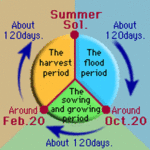 The ancient Egyptians did not celebrate four seasons of spring, summer, fall, and winter as we do. Rather, their three seasons were uniquely timed to the particular agricultural requirements in their geographic region. The three seasons were:
The ancient Egyptians did not celebrate four seasons of spring, summer, fall, and winter as we do. Rather, their three seasons were uniquely timed to the particular agricultural requirements in their geographic region. The three seasons were:
- Ahket – Innundation
Also called the Red Season, it extended from mid July to mid November, when most of the river valley and Delta were underwater.
- Pert – Sowing
Also called the Black Season, it extended from mid November to mid March, the equivalent to our spring, which the Egyptians called the Coming Forth.
- Shemu – Harvest
Also called the White Season, it extended from mid March to mid July when crops were harvested. By season’s end, everything was dry and the fields were scorched.
From: Feasts of Light
The great and supreme powers of ancient Egypt were the Gods and Goddesses of nature. The coming of the annual flood, the blossoming of the lotus, the rising of the brightest star in the sky, the disappearance of the moon, the eclipsing of the sun, the cutting of the wheat – all were occasions in which the Divine manifested on earth.
The religious life of the ancient Egyptians was marked by the celebration of the following kinds of sacred events:
- Festivals dedicated to a particular god or goddess which honored them through the public remembrance of their mythic lives.
- Festivals which honored the dead, bringing together a sense of the tribal community and the ancestral history and marking the cycles of time.
- Festivals which initiated the agrarian work cycles of preparing, sowing, and harvesting, as well as lying fallow.
In all probablity these seasonal festivals were determined by astronomical markers, such as the equinoxes, the solstices, and the rise of particular stars and constellations.
These were sacred events to which the Great Gods and Goddesses provided their blessings, for they were the manifestations of the cosmic cycle of nature. The will of the Gods was made known through the great pattern laid out in the sky by celestial phenomena.
There earliest festivals were those celebrating the mysteries of the Goddess in her appearance as the day and night sky, as both sun and moon. Most of the original ancient Egyptian feast days were celebrated at the new or the full moon. The ancient hieroglyph for “month” was the image of the moon itself. Apparently, the original festival calendar was lunar.
Of course, many Egyptian feast days are moveable feasts; that is, they are lunar festivals timed to phases of the moon. Thus, their occurrence might slip around from one year to the next. Other Egyptian festival dates were set by the motion of the stars, the planets, and the actions of the sun.
In any true sense it would be impossible for us to know the actual recurring dates of many of the festivals. We can, however approximate the ancient dates, which is what most Egyptologists do.
During the season of Inundation more major public festival occurred than at any other time of the year, most of them related to fertility rites and abundance rituals. The feasts tended to occupy the general public during this time because the land was so flooded that little real work could be done.
By comparison, the Sowing season had fewer festivals. Once the waters receded and work in the fields began, the Sowing season was the busiest time of year. The growing season was quickly followed by the Harvest season. But during the final months of the year, when the harvest had ended and the land was dry, the festivals began again, mostly in anticipation of the coming Inundation.
The festival calendar, as it appears to us now, spans three thousand years of Egyptian history and probably was being recorded, observed, and manipulated many thousands of years before that. In those three millennia a great many political and religious changes affected the designated feast days. Some feasts fell out of favor, others were renamed, a few were entirely forgotten.
From: Feasts of Light
The Mourning Moon is upon us. As the days grow shorter and the sun’s life-giving fires are banked, sometimes it seems so dark we feel the light will never return. This moon, however, is a reminder that death is just a part of the endless cycle of life, death, and rebirth.
It’s also known as the Fog Moon or Snow Moon, depending on where you live. Some Native American tribes referred to it simply as The Moon When Deer Shed Antlers (although in most regions it’s more accurate to say they’re shedding their velvet – a buck doesn’t usually lose antlers until later in the winter, unless you’re very far north).
Correspondences:
- Colors: Gray, blues
- Gemstones: Lapis lazuli, turquoise, topaz
- Trees: Cypress, alder, hazel
- Gods: Bastet, Isis, Kali, Hecate, Astarte
- Herbs: Thistle, betony, verbena, fennel
- Element: Water
In the early Celtic society, November was the beginning of the new year, and so it makes sense to use the magic of this moon phase to celebrate new beginnings.
This is a time of washing away the baggage of the past and letting it go. Once you’ve done that, you’ll be able to focus on the joys of the future. During the Mourning Moon phase, say goodbye to bad habits and toxic relationships, and get a fresh start for the new year. Work on developing and strengthening your connection with Spirit.
The new moon is sacred to the goddess Hekate, and these cakes are ideal for use in rituals honoring her, as well as for Hekate Suppers, or an offering to leave at a crossroads. Many of the ingredients are sacred to the Dark Goddess, additionally there are 3 x 3 ingredients, using the number three which is also sacred to Hekate.
- 1 1/2 cups flour
- 1/2 cup of soft butter
- 1/4 cup of honey
- 1/2 tsp baking soda
- 1/2 tsp salt
- 2 tbsp black poppy seeds
- 1 egg
- 1/2 tsp almond extract
- 1 tsp anise seeds
Directions:
(If possible use organic ingredients and free-range fertile eggs.) Sift the flour, salt and baking soda together. Cream the butter, honey and egg. Blend the two mixtures together and add the remaining ingredients. Shape into small thin crescent shapes. Place with space between the shapes to allow for spreading during baking on a cool, oiled baking tray.
Bake at 350 F for about 12 minutes or until lightly golden.
~Sue Bowman, Keys to the Crossroads
The Dark of the Moon, those few days where the moon is not visible, just prior to the rebirth of the New Moon, are controversial. Some traditions will not cast spells during this period. Others. particularly those devoted to Dark Moon spirits like Hekate or Lilith, consider this a period of profound magickal power which may be exploited as needed.
In Arabic folk custom, it’s recommended that you keep an eye on moon phases. Whatever you find yourself doing at the moment when you first catch a glimpse of the brand new moon is the right thing for you to do.
More New Moon Lore:
- Almost every culture believed that if the New Moon came on Monday (Moon-day) it was a sign of good weather and good luck.
- Two new moons in one month were said to predict a month’s bad weather.
- Any new moon on a Saturday or Sunday was said to predict rain and general bad luck.
- Good luck will come your way if you first see the New Moon outside and over your right shoulder. You can also make a wish that will be granted. The best luck came from looking at the Moon straight on.
- In some parts of Ireland, upon seeing the New Moon, people bowed or knelt, saying: O Moon, leave us as well as you found us.
- Upon seeing the New Moon, bow to her and turn over the silver or coins in your pocket. This will bring you luck in all your affairs.
- If the New Moon is seen for the first time straight ahead, it predicts good fortune until the next New Moon.
- To encourage luxuriant growth, cut your hair on the New Moon.
- Wood cut at the New Moon is hard to split.
- The English had a saying that if a member of the family died at the time of the New Moon, three deaths would follow.
- Although the Koran expressly forbids worshiping the Sun or Moon, many Muslims still clasp their hands at the sight of a New Moon and offer a prayer.
From: Moon Magick and other sources
